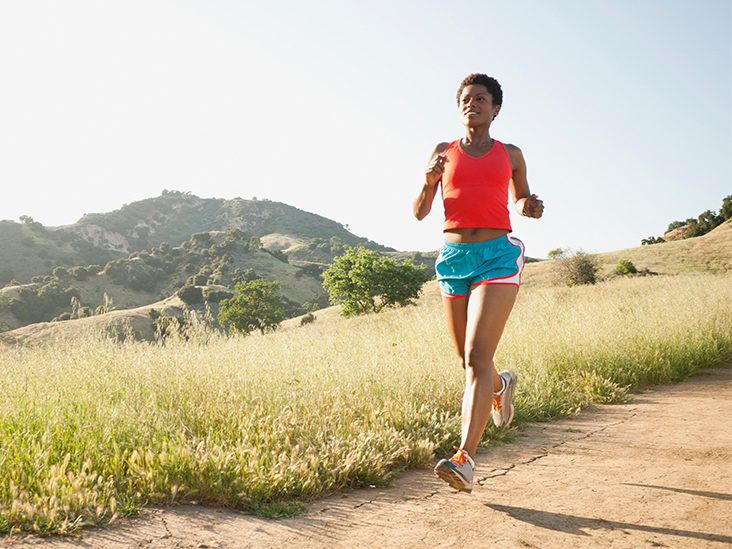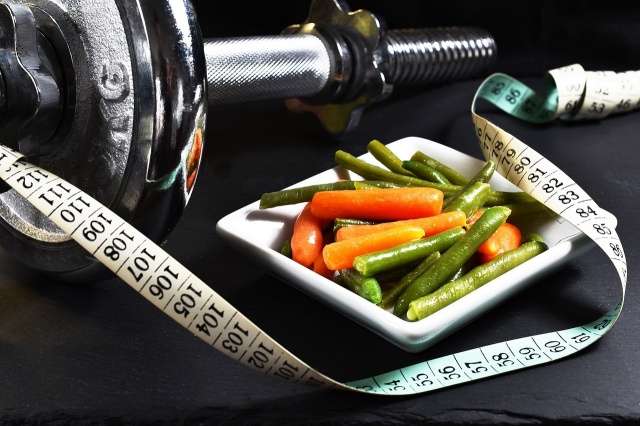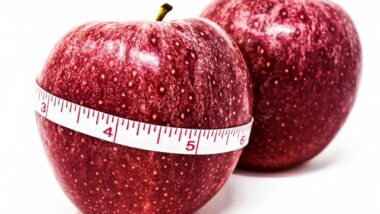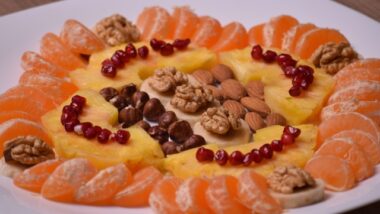The number of calories you naturally burn varies. It depends on factors like age, weight, and activity level.
Every person has a unique metabolic rate, which determines how many calories they burn daily. Basal metabolic rate (BMR) is the number of calories your body needs to maintain basic functions like breathing and digestion. Factors such as age, gender, weight, and muscle mass influence your BMR.
People with more muscle mass tend to burn more calories at rest. Physical activity also plays a significant role in calorie expenditure. Even simple activities like walking or standing can increase the number of calories burned. Understanding these variables can help you manage your weight and overall health more effectively.

Credit: health.clevelandclinic.org
Daily Caloric Burn Basics
Understanding how many calories you burn daily is essential for managing your weight. Your daily caloric burn is the total number of calories your body uses in a day. Knowing this can help you make informed choices about your diet and exercise routines.
Caloric Burn Definition
Caloric burn refers to the number of calories your body uses to perform various activities. These activities include breathing, digesting food, and physical activities like walking or exercising. Even while resting, your body burns calories to maintain vital functions.
Here is a table to illustrate the average caloric burn for different activities:
| Activity | Calories Burned (per hour) |
|---|---|
| Sleeping | 50 |
| Walking | 150 |
| Running | 600 |
Importance Of Caloric Burn
Understanding your caloric burn is crucial for weight management. If you burn more calories than you consume, you will lose weight. Conversely, consuming more calories than you burn leads to weight gain.
Here are some key points to consider:
- Caloric burn helps you plan your diet.
- It aids in setting realistic fitness goals.
- Monitoring caloric burn can improve your overall health.
To sum up, knowing your daily caloric burn is vital. It helps you make better lifestyle choices and achieve your health goals.
Credit: www.quora.com
Factors Affecting Caloric Burn
Understanding how many calories you naturally burn is essential. Various factors influence this daily caloric expenditure. These factors include age, gender, body composition, and activity level. Let’s delve into each of these elements to see how they impact caloric burn.
Age And Metabolism
Age plays a significant role in metabolic rate. As people age, their metabolism tends to slow down. This means older individuals burn fewer calories at rest compared to younger people.
| Age Group | Metabolic Rate |
|---|---|
| 20-30 years | High |
| 30-50 years | Moderate |
| 50+ years | Low |
Gender Differences
Gender also affects how many calories you burn. Men typically have more muscle mass than women. More muscle mass means higher caloric burn.
- Men: Higher muscle mass, higher caloric burn.
- Women: Lower muscle mass, lower caloric burn.
Body Composition
Body composition is crucial in determining caloric burn. Individuals with more muscle burn more calories. Fat burns fewer calories compared to muscle.
- Muscle Mass: Higher muscle mass increases caloric burn.
- Fat Mass: Higher fat mass decreases caloric burn.
Activity Level
Your activity level directly impacts how many calories you burn. More active people burn more calories.
Consider these activity levels:
- Sedentary: Minimal activity, low caloric burn.
- Moderately Active: Some activity, moderate caloric burn.
- Very Active: High activity, high caloric burn.
Basal Metabolic Rate (bmr)
The Basal Metabolic Rate (BMR) is the number of calories your body needs to maintain basic functions while at rest. These functions include breathing, circulating blood, and maintaining body temperature. Understanding BMR helps in managing weight and overall health.
What Is Bmr
BMR is the minimum number of calories your body requires to function at rest. It accounts for about 60-70% of the total calories burned daily. This energy is used for vital processes such as:
- Breathing
- Heart beating
- Cell production
- Nutrient processing
- Temperature regulation
Calculating Bmr
Calculating your BMR can provide insight into your daily calorie needs. The most common method is the Harris-Benedict Equation. There are different formulas for men and women:
| Gender | BMR Formula |
|---|---|
| Men | BMR = 88.362 + (13.397 x weight in kg) + (4.799 x height in cm) – (5.677 x age in years) |
| Women | BMR = 447.593 + (9.247 x weight in kg) + (3.098 x height in cm) – (4.330 x age in years) |
Use these formulas to find your BMR. Then, multiply by your activity level to get total daily calorie needs.
Factors Influencing Bmr
Several factors can influence your BMR. These include:
- Age: BMR decreases with age.
- Gender: Men usually have higher BMR.
- Weight: Heavier people have higher BMR.
- Height: Taller individuals have higher BMR.
- Body composition: More muscle increases BMR.
- Genetics: Family history affects BMR.

Credit: www.healthline.com
Thermic Effect Of Food (tef)
The Thermic Effect of Food (TEF) is the energy your body uses to digest, absorb, and process nutrients. This process can boost your metabolism slightly, helping you burn more calories naturally. Let’s dive into how TEF works and which foods impact it the most.
Understanding Tef
TEF accounts for about 10% of your daily calorie expenditure. This means if you eat 2,000 calories a day, around 200 calories get burned through TEF. Different foods have different effects on TEF. Proteins, carbs, and fats all play a role but in different ways.
Proteins have the highest TEF, requiring more energy to digest. Carbohydrates and fats have lower TEF values. Eating meals with higher protein can increase your body’s calorie burn.
Foods Impacting Tef
Certain foods can boost your TEF more than others. Here are some examples:
- Protein-rich foods: Chicken, fish, eggs, tofu, and beans.
- Complex carbs: Whole grains, vegetables, and legumes.
- Healthy fats: Avocados, nuts, seeds, and olive oil.
Here’s a table summarizing the TEF of different macronutrients:
| Macronutrient | TEF Percentage |
|---|---|
| Protein | 20-30% |
| Carbohydrates | 5-10% |
| Fats | 0-3% |
Incorporating these foods can help you naturally burn more calories. Remember, a balanced diet with a mix of these nutrients is key.
Physical Activity And Caloric Burn
Physical activity plays a crucial role in burning calories. Different activities burn calories at various rates. Understanding this can help you manage your weight and health.
Exercise Impact
Exercise is a structured physical activity. It includes activities like running, swimming, and cycling.
| Exercise Type | Calories Burned per Hour (approx.) |
|---|---|
| Running (5 mph) | 600 |
| Swimming | 500 |
| Cycling (10 mph) | 400 |
| Walking (3 mph) | 300 |
Running burns the most calories. Walking burns the least. Choose the exercise that fits your goals and lifestyle.
Non-exercise Activity Thermogenesis (neat)
NEAT refers to the calories burned through non-exercise activities. These include daily tasks.
- Standing
- Fidgeting
- Household chores
- Walking to work
These activities may seem minor. But they contribute significantly to your total caloric burn. For instance, standing burns more calories than sitting.
Increasing your NEAT can help you burn more calories daily. Small changes, like taking the stairs, can make a big difference.
Physical activity and NEAT both play essential roles in managing your caloric burn. By understanding how they work, you can optimize your daily activities for better health.
Tracking Daily Caloric Burn
Tracking daily caloric burn is essential for understanding your energy balance. Knowing how many calories you burn helps in managing weight and health. There are various methods to track caloric burn, each with its pros and cons.
Using Wearable Tech
Wearable tech like fitness trackers and smartwatches make tracking easy. These devices use sensors to monitor your physical activity. They track steps, heart rate, and even sleep patterns.
Popular brands include Fitbit, Apple Watch, and Garmin. They sync with apps to give detailed reports. These reports show the number of calories burned each day.
| Brand | Features |
|---|---|
| Fitbit | Heart rate, steps, sleep tracking |
| Apple Watch | Heart rate, steps, GPS |
| Garmin | Heart rate, steps, advanced activity tracking |
Advantages:
- Real-time data
- Easy to use
- Detailed reports
Disadvantages:
- Costly
- Battery life
- May require frequent charging
Manual Tracking Methods
Manual tracking methods include using caloric burn charts and equations. These methods require more effort but can be effective.
One common method is the Harris-Benedict Equation. It calculates your Basal Metabolic Rate (BMR). BMR is the number of calories your body needs at rest.
Here is the formula:
BMR (Men) = 88.362 + (13.397 x weight in kg) + (4.799 x height in cm) - (5.677 x age in years) BMR (Women) = 447.593 + (9.247 x weight in kg) + (3.098 x height in cm) - (4.330 x age in years)
After calculating your BMR, you can estimate total caloric burn by multiplying BMR by an activity factor.
Activity Factors:
- Sedentary (little or no exercise): BMR x 1.2
- Lightly active (light exercise/sports 1-3 days/week): BMR x 1.375
- Moderately active (moderate exercise/sports 3-5 days/week): BMR x 1.55
- Very active (hard exercise/sports 6-7 days a week): BMR x 1.725
- Super active (very hard exercise/physical job): BMR x 1.9
Advantages:
- Free
- Customizable
- Provides a deeper understanding
Disadvantages:
- Time-consuming
- Requires calculations
- Less accurate
Optimizing Caloric Burn
Everyone wants to burn more calories. It’s essential for staying fit and healthy. Optimizing your caloric burn can help you achieve your fitness goals faster. Let’s dive into the effective ways to burn more calories naturally.
Effective Workouts
Engaging in high-intensity interval training (HIIT) boosts your metabolism. HIIT involves short bursts of intense exercise followed by rest. It helps burn more calories in less time.
- Running
- Swimming
- Cycling
Strength training builds muscle mass. More muscle means more calories burned at rest. Include weights or body-weight exercises in your routine.
Consistency is key. Aim for at least 150 minutes of moderate exercise weekly.
Dietary Adjustments
Your diet plays a crucial role in caloric burn. Eating smaller, frequent meals can keep your metabolism active.
| Food | Calories Burned |
|---|---|
| Protein-rich foods | 20-30% |
| Whole grains | 10-15% |
Include protein-rich foods like chicken, beans, and eggs. They require more energy to digest. Drink plenty of water. Staying hydrated can boost your metabolism by up to 30%.
Lifestyle Changes
Your daily habits affect your caloric burn. Simple changes can make a big difference.
- Take the stairs instead of the elevator.
- Walk or bike to nearby places.
- Stand more often. Use a standing desk if possible.
Getting enough sleep is crucial. Lack of sleep can slow your metabolism. Aim for 7-9 hours of sleep each night.
Common Myths
There are many myths about how we burn calories. Understanding these myths can help you make better choices. Let’s explore some common myths.
Spot Reduction Myth
Many people believe that targeting one area will burn fat there. This is known as the spot reduction myth. For example, doing many sit-ups to lose belly fat. But the truth is, you can’t choose where your body burns fat. Your body decides where to burn fat. Exercise can build muscle, but not target fat loss. A healthy diet and overall fitness are key.
Eating Late Night
Another common myth is that eating late at night causes weight gain. People think that late-night snacks are stored as fat. The truth is, it’s not about when you eat, but what and how much. If you consume more calories than you burn, you gain weight. The time of day doesn’t matter. Focus on balanced meals and portion control. Late-night snacking can be okay if done wisely.
Frequently Asked Questions
How Many Calories Do You Naturally Burn In A Day Without Exercise?
Most adults naturally burn about 1,600 to 2,400 calories daily without exercise, depending on age, gender, and metabolism.
How Do I Calculate How Many Calories I Burn Naturally?
Calculate calories burned naturally using the Basal Metabolic Rate (BMR) formula. Multiply your BMR by your activity level.
Does Your Body Naturally Burn 1000 Calories A Day?
Yes, your body naturally burns calories daily. On average, adults burn around 1,200-2,000 calories per day, depending on factors like age, gender, and activity level.
What Burns The Most Calories Naturally?
High-intensity interval training (HIIT) burns the most calories naturally. It combines short bursts of intense exercise with rest periods.
Conclusion
Understanding how many calories you naturally burn is crucial for managing your health. It helps in weight loss and fitness goals. Knowing your Basal Metabolic Rate (BMR) can guide your dietary and exercise plans. Always consult healthcare professionals for personalized advice.
Stay active and make informed choices to maintain a healthy lifestyle.


